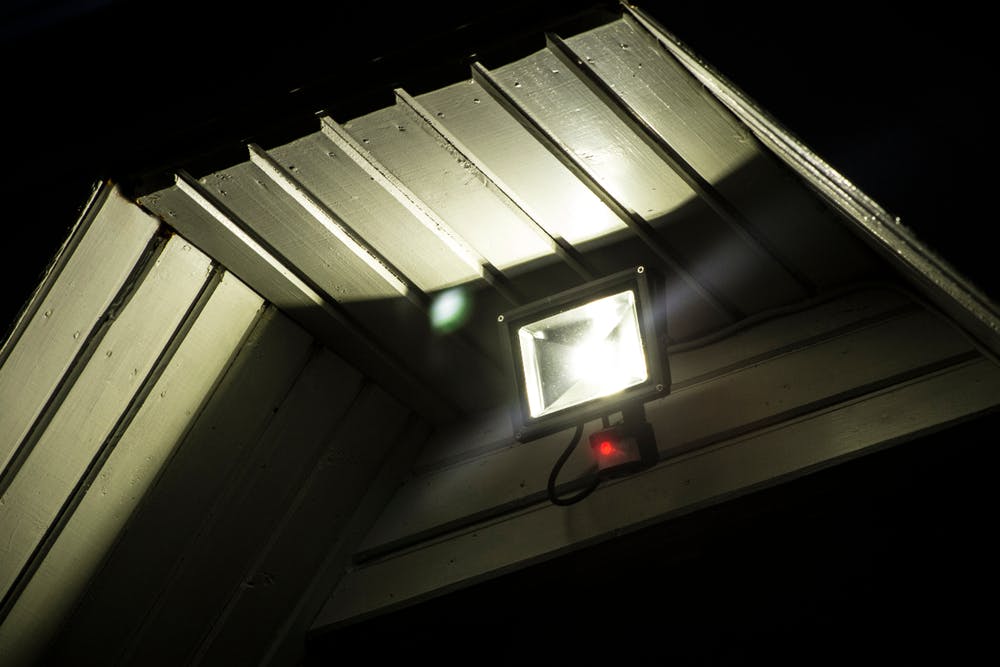13th November 2025
The Outdoor Sensor & Security Light Buyers Guide
Security lights and outdoor sensors can be a massive deterrent against burglars and opportunistic thieves. Not only do they make would-be intruders easier to spot, but they also give the illusion that a property is occupied, scaring thieves away.
IronmongeryDirect
13th November 2025
5 mins
When it comes to choosing security lights, it is important to know which type is best suited to your project, as well as the optimal brightness for each type.
How do security lights work?
Security lights work in two ways: first, they light up any potential thieves, making them easier to spot on CCTV and limiting the places they can hide. Secondly, they make thieves think somebody is in, making them less likely to try and break in if they assume the property is occupied, meaning they can be a great deterrent.
Keeping criminals at bay aside, they are also a simple way to make sure that anyone that wishes to gain access lawfully can do so safely with a clearly illuminated path.
What are the types of security light?
There are four main types of security light, with each being best suited to specific purposes. So, whether you’re looking to install these lights in domestic, commercial or even industrial premises, you’ll be able to pick the best type for you.
Motion activated security lights
As the name suggests, motion activated security lights become active when their PIR (passive infrared) sensor picks up on motion, meaning anyone who approaches will trigger the sensor and illuminate the area. Not only is this a great way to deter burglars, but it also makes finding your front door much easier if you get home at night.
Solar security lights
With the common misconception that solar powered lighting needs direct sunlight to be functional, some may be sceptical when considering this option.
However, because solar security lights require no mains power, they can actually be a very convenient and cost effective way to provide extra security. After a full day of charging, even when overcast, these lights should be active for between 10 and 12 hours, providing an environmentally friendly alternative to the mains powered options that will last throughout the entire night.
Timer and light-sensitive security lights
These light systems can be set to a time that suits you, or will come on automatically when light falls below a certain level. While this could be practical in certain situations - especially if a premises is always shut at the same time - it can also be very costly. Unlike motion activated lights, once these lights come on, they stay on. Therefore, this type of security light may be best reserved for premises that operate 24/7.
LED and halogen floodlights
Floodlights are one of the most common types of security lighting, and can often be found on business and industrial premises, as they provide a constant source of light, and LED Floodlights are a great option for those that are conscious of cost.
Floodlights have a number of general and specific applications, for example, if ever you use a car park at night, chances are it’s lit by floodlights, while they’re also used in sports grounds across the world.
Where do you put security lights?
The placement of your security lights really depends on what you want to secure. If you’re looking to deter burglars, it makes sense to install your security lights in areas where they could look to gain access. Front doors, car park entrances and loading bays would all be worth considering.
If the main aim of the lights is to help improve visibility on site or domestic pathways, you should install them over walkways and near the main entry points.
When it comes to motion activated security lights, these need to be placed around 6 to 10 feet above the ground (1.8 to 3 meters). That will allow their light to cover a wider area, while also ensuring the light is softer by the time it hits the ground. A harsh light can create shadows - the perfect place for thieves to hide.
How bright should a security light be?
The number of lumens your security light will emit depends on which type you choose. Floodlights, for example, can emit anything between 700 and 1300 lumens, making them a great option for covering large areas.
Motion activated security lights are around 300 to 700 lumens, and are generally used on a more focused area of a property.
It’s also worth thinking about how the brightness would impact any neighbours. If you’re installing lights on a residential property, they shouldn’t be visible by any of the nearby houses, while floodlights can cause light pollution that could keep whole neighbourhoods awake.
It is also important to consider lux when it comes to security lighting, which is the measurement of the intensity of light on a surface over a given area, with 1 lux being equal to 1 lumen/m2.

These types of lighting are a vital part of making sure that both domestic and commercial valuables are protected, so choosing the right type is just as important. If you’re looking to stock up on high-quality outdoor security lighting fixtures, you can find out more here.
